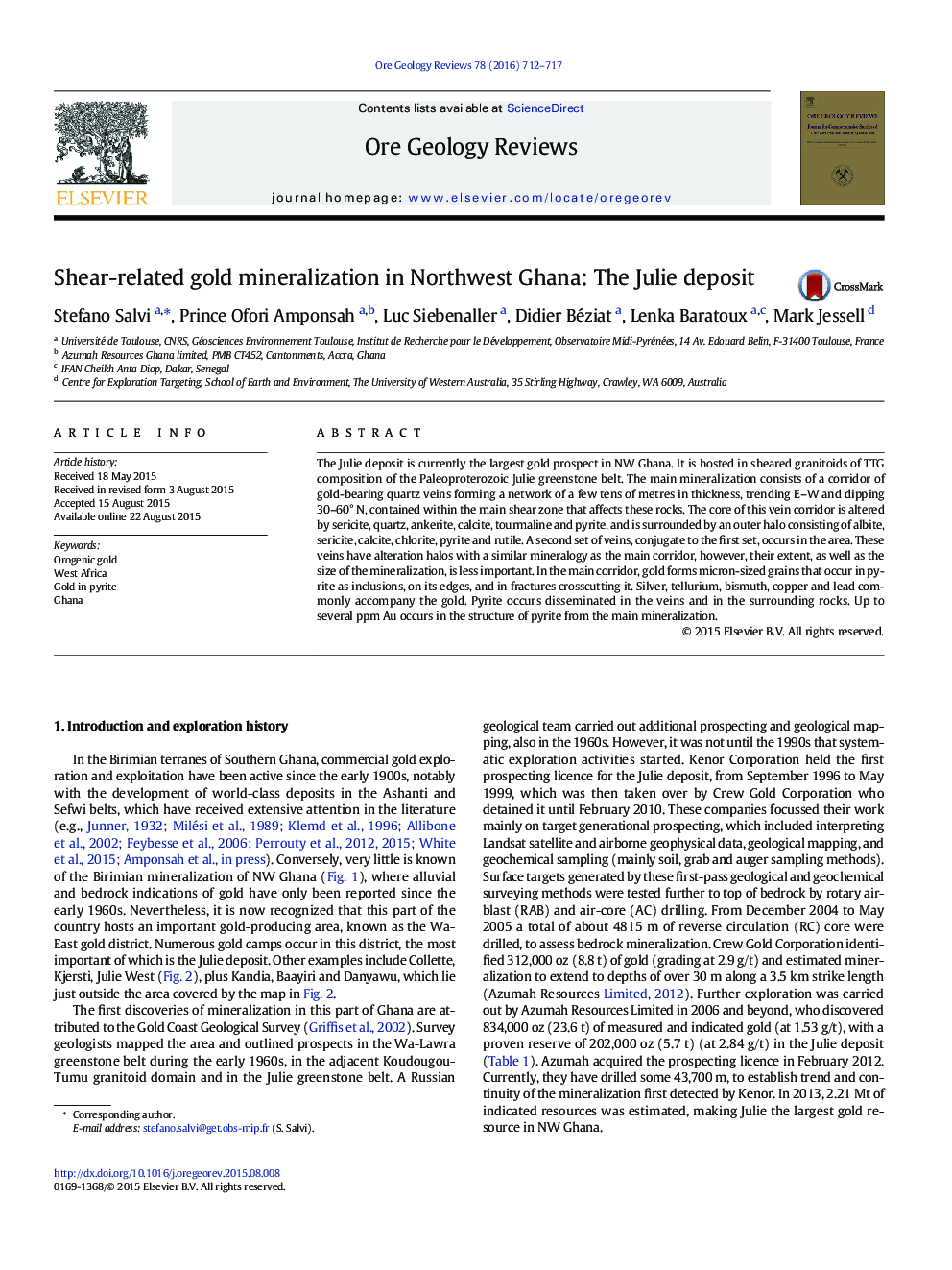| Article ID | Journal | Published Year | Pages | File Type |
|---|---|---|---|---|
| 4696884 | Ore Geology Reviews | 2016 | 6 Pages |
•One of very few published work on gold deposits in NW Ghana•Most likely the next operating mine in NW Ghana, to this day, the largest gold resource in the region.•Relatively rare case of gold mineralization hosted in granitic rocks.•A summary of the geological and mineralogical relationships at the Julie deposit, and of its exploration history.
The Julie deposit is currently the largest gold prospect in NW Ghana. It is hosted in sheared granitoids of TTG composition of the Paleoproterozoic Julie greenstone belt. The main mineralization consists of a corridor of gold-bearing quartz veins forming a network of a few tens of metres in thickness, trending E–W and dipping 30–60° N, contained within the main shear zone that affects these rocks. The core of this vein corridor is altered by sericite, quartz, ankerite, calcite, tourmaline and pyrite, and is surrounded by an outer halo consisting of albite, sericite, calcite, chlorite, pyrite and rutile. A second set of veins, conjugate to the first set, occurs in the area. These veins have alteration halos with a similar mineralogy as the main corridor, however, their extent, as well as the size of the mineralization, is less important. In the main corridor, gold forms micron-sized grains that occur in pyrite as inclusions, on its edges, and in fractures crosscutting it. Silver, tellurium, bismuth, copper and lead commonly accompany the gold. Pyrite occurs disseminated in the veins and in the surrounding rocks. Up to several ppm Au occurs in the structure of pyrite from the main mineralization.
